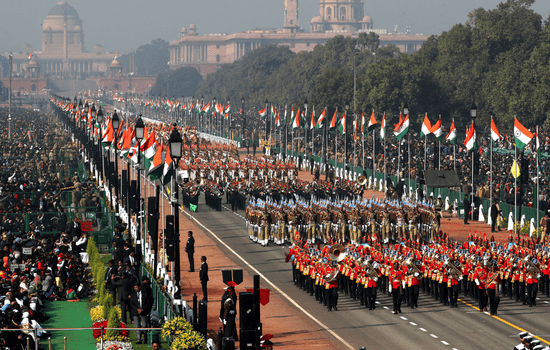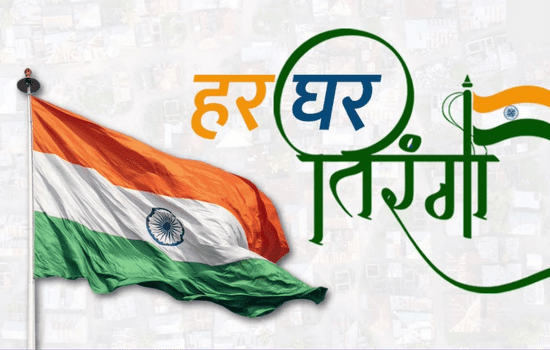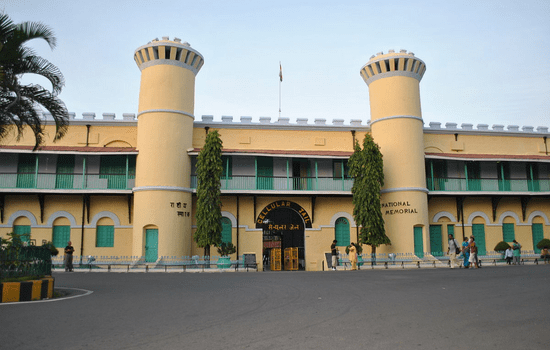Every year on Independence Day, the Prime Minister of India hoists the national pride tricolor flag at the Lahori Gate of the Red Fort in Delhi. On August 15, 1947, India declared independence from British Rule. To be honest, India’s independence from British Rule was not simple. Thousands of freedom warriors participated in the freedom movement and sacrificed their blood in order to achieve independence. Young people, who are the driving force behind the country, should understand the significance of Independence Day as well as its history. Let us celebrate the 76th anniversary of the Declaration of Independence with great information.
History of Independence Day

The East India Company’s victory in the Battle of Plassey in 1757 marked the beginning of British rule in India. It gradually gained control of undivided India and ruled the country for a century. Until the Indian Mutiny in 1857, there was no British crown rule in India. However, the fight for independence did not begin until World War I.
Mahatma Gandhi, who taught nonviolence, founded several freedom movements, including the Non-Cooperation and Civil Disobedience movement. Due to capital losses during World War II, the Labour Government chose to end the rule in India. After that, the British Government declared that India will free by June 1948, however, this has pushed back due to conflict between Hindus and Muslims, particularly in Punjab and Bengal. With the partition of India in August 1947, the British declared independence.
With the declaration of independence in February 1947, the desire for a separate country for Muslims began. The British government pushed the date of independence ahead due to widespread agitation and bloodshed between Muslims and Hindus. On June 3, 1947, the British proclaimed that the Constitution established by the Indian Constituent Assembly in 1946 would not apply to those regions of the country that refused to adopt it. Lord Mountbatten, Viceroy of India, proposed the partition proposal known commonly as the “Mountbatten Plan.” The partition has recognized by both the Congress and the Muslim League. The Indian Independence Act of 1947 has passed, and the Constituent Assembly, established in 1946, has renamed the Parliament of Indian Dominion.
How India celebrates Independence Day

Although celebrations take place around the country, the major staging area for Independence Day celebrations is India’s capital city, Delhi, which is home to the 17th-century Red Fort, which used to function as a political center
The major celebration begins with the prime minister hoisting the national flag. Which is synchronized with 21 honorary gunshots and is followed by a heartfelt rendition of ‘Jana Gana Mana’ (India’s national song). The prime minister addresses the nation, talks about the events leading up to India’s independence, and concludes the speech with a note about the country’s future.
Also in the day, there will be patriotic parades and pageants honoring freedom warriors, a march-past led by the Indian armed forces and paramilitary forces, and students performing.
Also Read:- Agneepath-You Must Know Everything About
Across the country, similar celebrations are held. While the national anthem is being performed, the chief minister of each state capital unfurls the flag. Flag-hoisting rituals and cultural programs that reflect India’s diversity are also held in government and non-government institutions, schools, universities, and housing societies. Throughout the day, patriotic songs are played on loudspeakers.
Kite flying has regarded as the day’s biggest event in northern and central India, as it has associated with a feeling of freedom and joy. In 1927, Indian revolutionaries and freedom fighters protested British rule by flying kites with the phrase “Go Back Simon.” Moreover, Kite flying has since become a tradition. You can see Kites of all sizes flying high in the sky in the colors of the Indian flag, either for enjoyment or competition.
A special Beating Retreat ceremony also takes place on this day at the Wagah Border in Amritsar. It includes sword fighting and traditional dances, as well as the symbolic closure of gates, a parade, and a flag-lowering ceremony.
Har Ghar Tiranga

Under the supervision of “Azadi Ka Amrit Mahotsav,” a campaign called “Har Ghar Tiranga”. It has been started to encourage individuals to raise the National Flag of India in their houses in order to facilitate a sense of patriotism in people’s hearts and remember the past.
contribution of those who fought bravely for country building. it has anticipated that all residents should urge to hoist Tiranga in their houses during the period from 13- 15 August. Given the following, the goal should be to aggressively encourage Independence Day. And citizens are encouraged to raise the National Flag on their rooftops. Under the subject “Har Ghar” to express gratitude to our freedom fighters/national heroes.
Also read: Tiranga: The Indian National Flag
Places to Visit on Independence Day
Wagah Border, Amritsar

Wagah Border’s Independence Day celebrations are at their peak. The spirit of Indian warriors and people is inspiring. Bharat Mata ki Jai chants may heard from afar. The elaborate beating retreat ceremony is the highlight of the day.
Timing:- 10 am to 4 pm
Amritsar’s Major Attractions Jalianwala Bagh, Golden Temple, Hall Bazaar.
Jhansi Fort, Jhansi

Jhansi is famous for its majestic fort and the legendary Rani Lakshmi Bai. This fort is a simple memorial to the warrior queen who battled bravely to defend her country against British forces. The evening light and sound spectacle, particularly on Independence Day, says a lot about her struggle.
Timing:- 8 am to 6 pm
Jhansi’s Major Attractions The Government Museum, Rani Mahal, St. Jude’s Shrine, and Ganesh Temple are all worth seeing.
Sabarmati Ashram, Ahmedabad

The Sabarmati Ashram is famous for Mahatma Gandhi’s teachings. This location promotes a simple way of life. A 90-minute tour of the Ashram takes guests through Bapu’s wonderful but humble life.
Timing:- 8:30 am to 6:30 pm
Ahmedabad’s Major Attractions Shaking Minar, Heritage Walk, Science City, Calico Museum of Textiles, and Victoria Garden are all worth a visit.
Also Read:- Unknown Facts You Should Know About Jim Corbett
Netaji Bhavan, Kolkata

The significance of Kolkata in the nation’s independence struggle cannot express in words. The ancestral house of Subhash Chandra Bose, the famous patriot and independence warrior. Therefore, this house has now turned into a museum.
Timing:- 11 am to 4 pm
Kolkata’s Major Attractions The Howrah Bridge, the Victoria Memorial, Fort William, Park Street, Mother Teresa’s House, and Shanti Niketan are all worth seeing.
Cellular Jail, Port Blair

Port Blair also calls as ‘Kaala Pani,’ and it has a terrible history. The Cellular Jail’s Light and Sound Show provides a glimpse into the lives of liberation fighters. Who spend years rotting in jail, subjected to terrible cruelty inflicted by British soldiers.
Timing:- 9 am to 12:30 pm, 1:30 pm to 5 pm
Port Blair’s Major Attractions Aberdeen Bazaar, Rodd Island, and Mount Harriet are among the highlights of the Mahatma Gandhi Marine National Park.
Conclusion
Since 1947, India has marked Independence Day on August 15. Every year, as part of the ceremonies, the Prime Minister hoists the flag above the Red Fort, exactly as Jawaharlal Nehru did. So celebrate independence day full of fun and hoist a flag on your roof and respect the Indian Flag.




